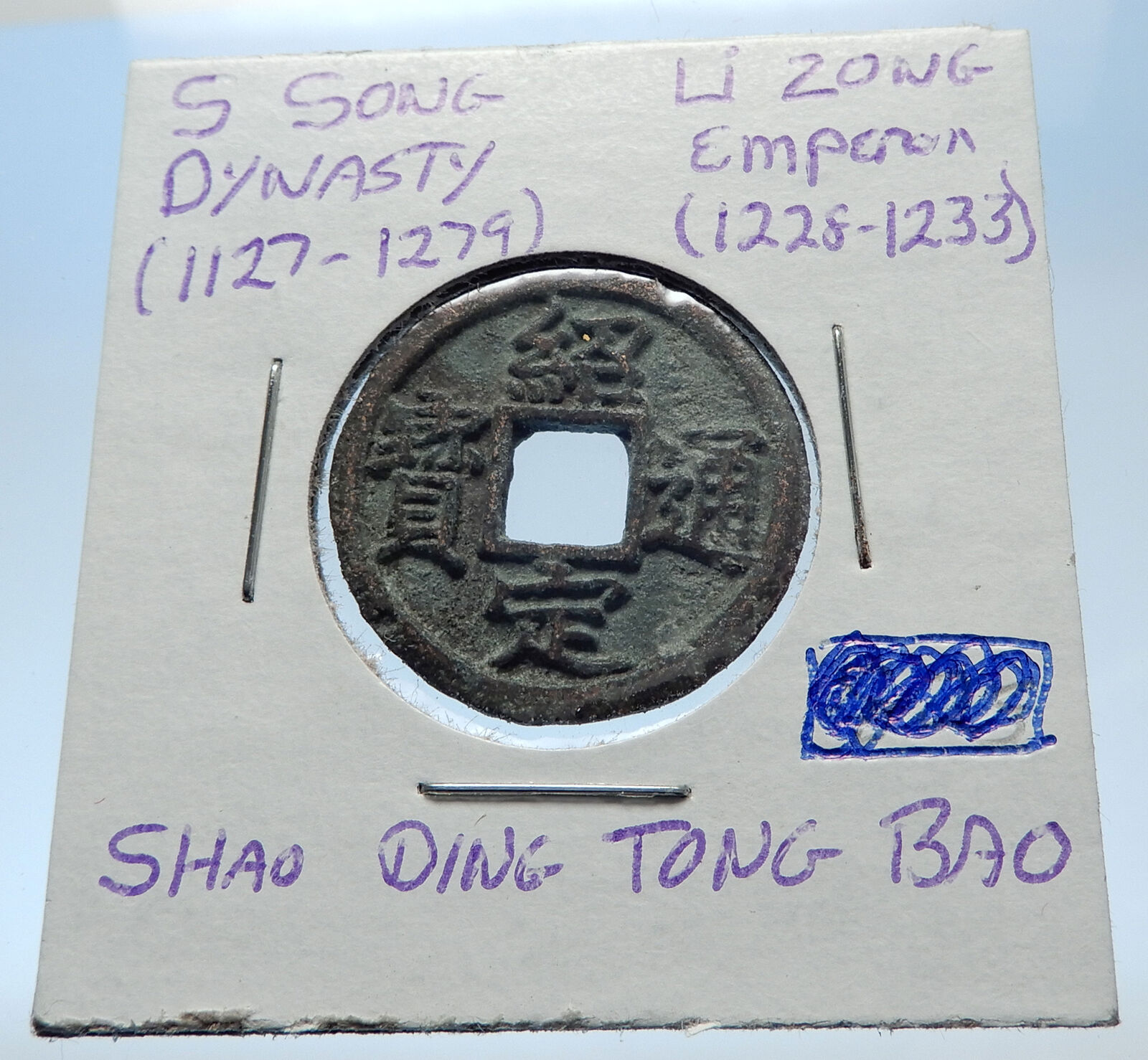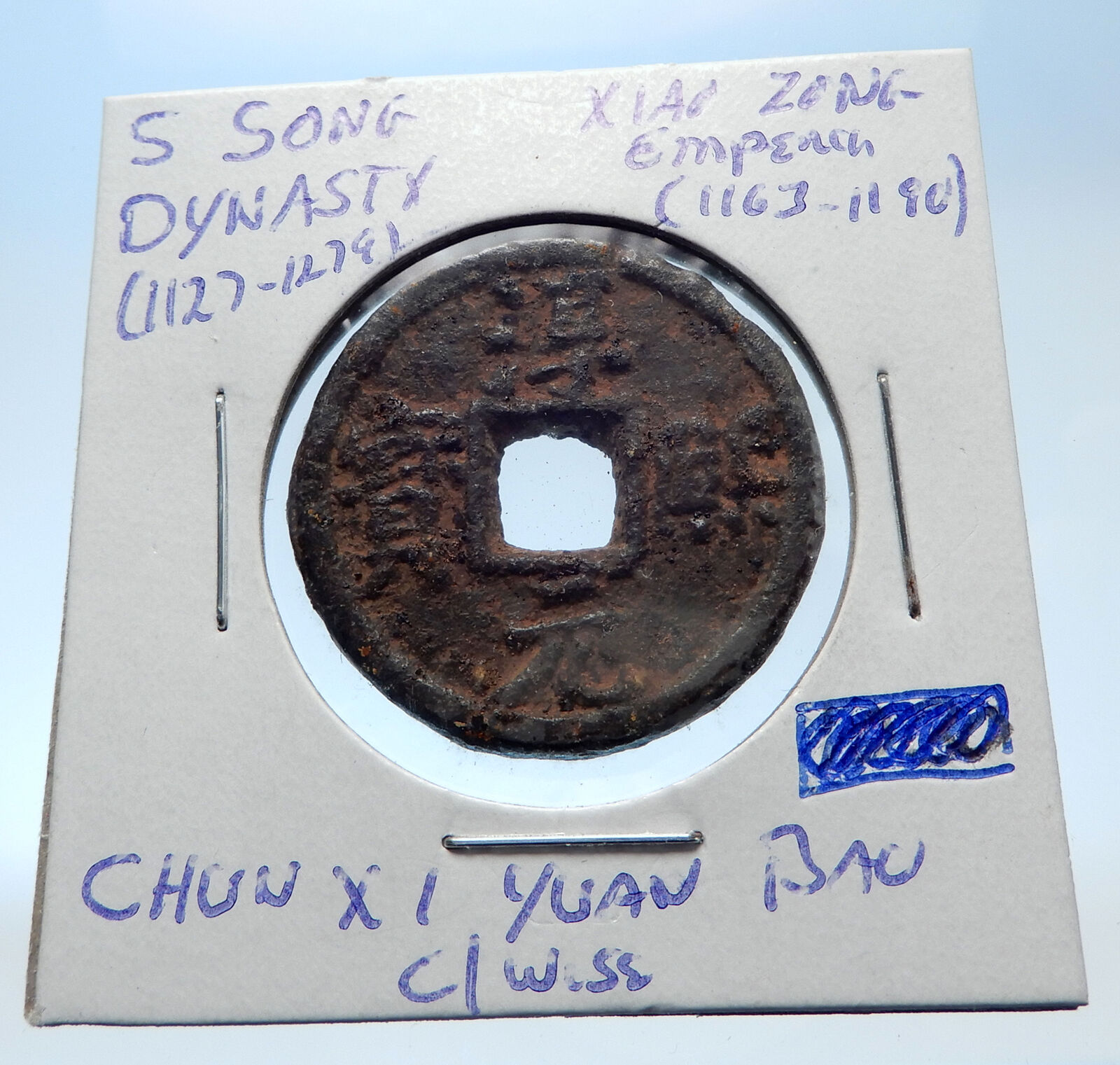|
Ancient
China – Chin / Jin Dynasty
Chang Tsung – Emperor: 1190-1208 AD
10 Cash Token 44mm (81.11 grams), Struck 1204 AD
Composition: 25% Silver, 25% Iron
Reference: Plate # 69, Sehjoth # 1093
Chinese Symbols.
Large characters.
You are bidding on the exact item pictured, provided with a Certificate of Authenticity and Lifetime Guarantee of Authenticity.
The Jin dynasty (/dʒɪn/, Chinese: 金朝; pinyin: Jīncháo) or Jin State (Chinese: 金國; pinyin: Jīnguó; Jurchen: Anchun Gurun), officially known as the Great Jin (Chinese: 大金; pinyin: Dà Jīn), lasted from 1115 to 1234 as one of the last dynasties in Chinese history to predate the Mongol conquest of China. Its name is sometimes written as Kin, Jurchen Jin or Jinn in English to differentiate it from an earlier Jìn dynasty of China (Chinese: 晉朝; pinyin: Jìn Cháo, 266–420) whose name is pronounced identically, but for the tone. It is also sometimes called the “Jurchen dynasty” or the “Jurchen Jin”, because members of the ruling Wanyan clan were of Jurchen descent.
The Jin emerged from Taizu’s rebellion against the Liao dynasty (916–1125), which held sway over northern China until the nascent Jin drove the Liao to the Western Regions, where they became known in historiography as the Western Liao. After vanquishing the Liao, the Jin launched a century-long campaign against the Han-led Song dynasty (960–1279), which was based in southern China. Over the course of their rule, the ethnic Jurchen emperors of the Jin dynasty adapted to Han customs, and even fortified the Great Wall against the rising Mongols. Domestically, the Jin oversaw a number of cultural advancements, such as the revival of Confucianism.
After spending centuries as vassals of the Jin, the Mongols invaded under Genghis Khan in 1211 and inflicted catastrophic defeats on the Jin armies. After numerous defeats, revolts, defections, and coups, they succumbed to Mongol conquest 23 years later in 1234.
Cash was a type of coin of China and East Asia, used from the 4th century BC until the 20th century AD. Originally cast during the Warring States period, these coins continued to be used for the entirety of Imperial China as well as under Mongol, and Manchu rule. The last Chinese cash coins were cast in the first year of the Republic of China. Generally most cash coins were made from copper or bronze alloys, with iron, lead, and zinc coins occasionally used less often throughout Chinese history. Rare silver and gold cash coins were also produced. During most of their production, cash coins were cast but, during the late Qing dynasty, machine-struck cash coins began to be made. As the cash coins produced over Chinese history were similar, thousand year old cash coins produced during the Northern Song dynasty continued to circulate as valid currency well into the early twentieth century.
In the modern era, these coins are considered to be Chinese “good luck coins”; they are hung on strings and round the necks of children, or over the beds of sick people. They hold a place in various superstitions, as well as Traditional Chinese medicine, and Feng shui. Currencies based on the Chinese cash coins include the Japanese mon, Korean mun, Ryukyuan mon, and Vietnamese văn.
|









